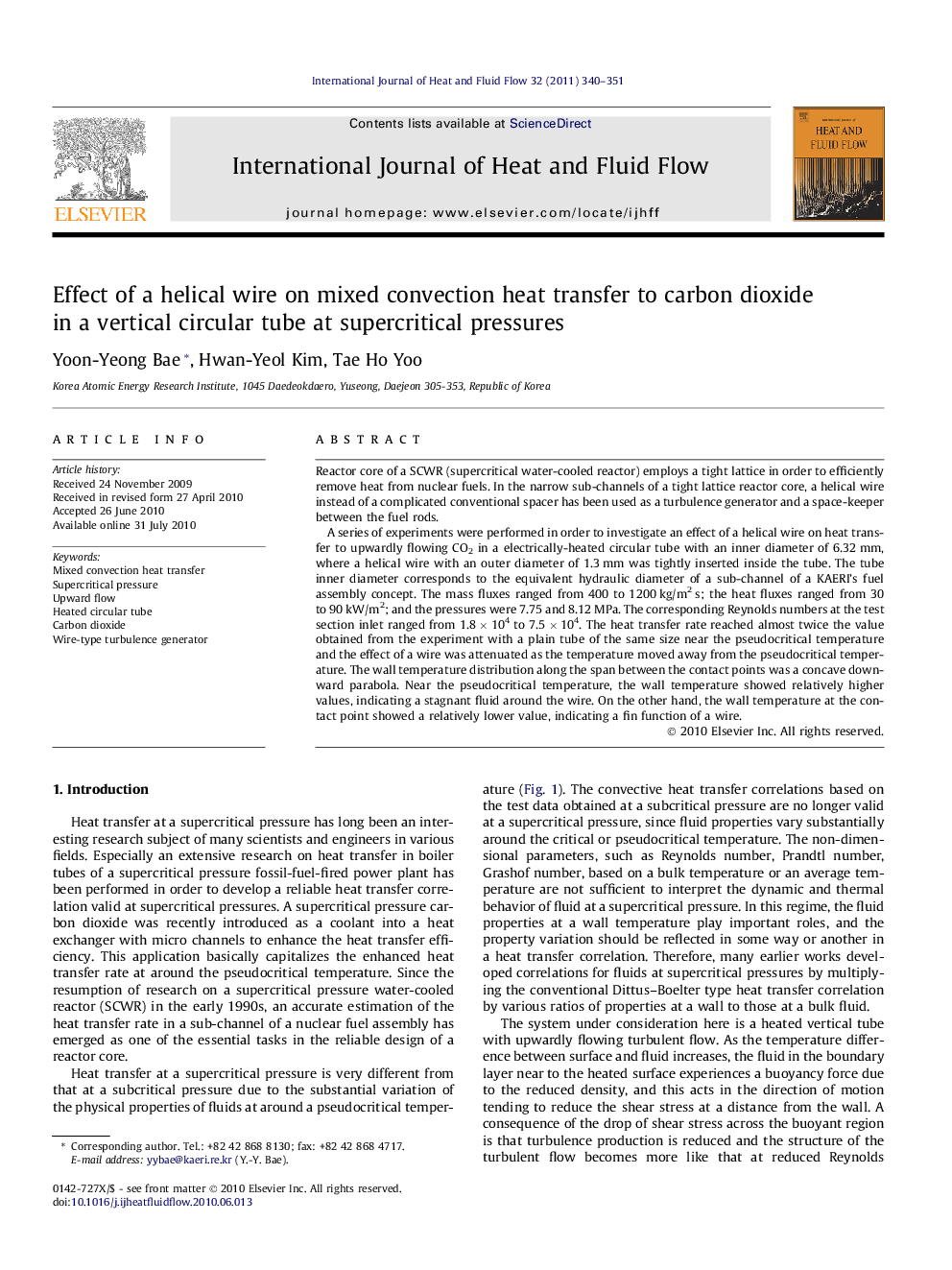| Article ID | Journal | Published Year | Pages | File Type |
|---|---|---|---|---|
| 655645 | International Journal of Heat and Fluid Flow | 2011 | 12 Pages |
Reactor core of a SCWR (supercritical water-cooled reactor) employs a tight lattice in order to efficiently remove heat from nuclear fuels. In the narrow sub-channels of a tight lattice reactor core, a helical wire instead of a complicated conventional spacer has been used as a turbulence generator and a space-keeper between the fuel rods.A series of experiments were performed in order to investigate an effect of a helical wire on heat transfer to upwardly flowing CO2 in a electrically-heated circular tube with an inner diameter of 6.32 mm, where a helical wire with an outer diameter of 1.3 mm was tightly inserted inside the tube. The tube inner diameter corresponds to the equivalent hydraulic diameter of a sub-channel of a KAERI’s fuel assembly concept. The mass fluxes ranged from 400 to 1200 kg/m2 s; the heat fluxes ranged from 30 to 90 kW/m2; and the pressures were 7.75 and 8.12 MPa. The corresponding Reynolds numbers at the test section inlet ranged from 1.8 × 104 to 7.5 × 104. The heat transfer rate reached almost twice the value obtained from the experiment with a plain tube of the same size near the pseudocritical temperature and the effect of a wire was attenuated as the temperature moved away from the pseudocritical temperature. The wall temperature distribution along the span between the contact points was a concave downward parabola. Near the pseudocritical temperature, the wall temperature showed relatively higher values, indicating a stagnant fluid around the wire. On the other hand, the wall temperature at the contact point showed a relatively lower value, indicating a fin function of a wire.
